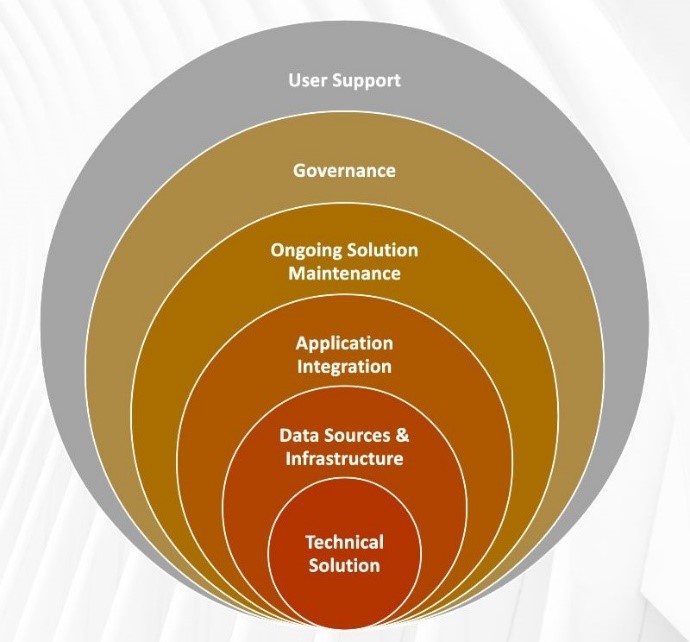15 Apr The Problem with AI for Business (And Three Ways to Fix It)
What’s the deal with Artificial Intelligence? Why does it seem to fall short of business leaders’ expectations time and time again?
“You want to put a band-aid on something that needs stitches.”
– Eric Jerome Dickey, New York Times Best-Selling Author
That’s the issue. As AI grows in popularity, it increasingly becomes businesses’ go-to remedy for complex or stubborn business problems. In those cases, AI can seem like a quick and easy fix.
In fact, that’s how many commercial AI products are marketed. If you have this specific problem, implementing this commercial AI product will fix it. And while those messages may ring true, they’re way too simplistic.
Unfortunately, as with all other types of business technology, a successful implementation is not as easy as pressing the ON button, sitting back, and reaping the benefits. There are so many factors that come into play with AI success – so many checklist items need to be accomplished before, during, and after a solution is simply “turned on.”

This graphic is from Glen Hilford’s webinar, “Demystifying AI – Critical Questions for Business Leaders,” and it depicts the “real cost” considerations of a successful AI implementation.
If your organization chooses to ignore or rush through those checklist items, you’re putting a band-aid on something that needs stitches. Here are three ways to really fix the problem with AI for business:
AVOID SHINY OBJECT SYNDROME
What problem is your organization trying to fix, and is AI the right approach? Sometimes, business leaders jump at the chance to implement AI technology because it’s innovative. But it might not be the best fit for the specific business or business problem.
It’s essential to be intentional and strategic beforehand. Why make a significant investment on a “trendy” commercial AI product when a less costly solution – whether it’s an AI or non-AI solution may meet your needs?
Glen Hilford, Vice President of Corporate Development and AI Expert, emphasizes a focus on solution viability. Before making such a significant investment of time, money, people, and organizational stability, it’s essential to first evaluate your business problem and AI’s ability to address that problem.
Despite AI’s wide range of capabilities, it’s not always the right fit. Again, be wary if any commercial AI product is presented as a quick-and-easy solution. AI is rarely that simple.
EXACT, SUFFICIENT, COMPLETE, ACCURATE, AND TIMELY DATA IS A NECESSITY
The term Artificial Intelligence refers to technology that mimics human functionality, whether that’s cognition, language, vision, automation, etc. – and data is the power source behind that.
The more robust your data infrastructure is, the better. You can’t expect an accurate sales forecast without historical data for the forecast to learn from. You can’t expect an accurate classification of “email spam” without previous examples. In these use cases, historic data serves as “training data” for AI. And the more applicable historic data an organization has, or can readily obtain, the more value AI can provide.
DON’T NEGLECT THE PEOPLE-SIDE OF AI SUCCESS
When it comes to AI, businesses are typically hyper-focused on the new, cutting-edge technology that will – hopefully – drive profitability and margin, lower costs, and/or mitigate risk. However, it’s self-destructive to overlook the people-side of AI.
Any change that affects the way employees work is a challenge. AI is no exception. In fact, there may be even more pushback since some tend to view AI as “job-stealing robots.”
It’s critical to prep for the organizational change from the very start, since end user acceptance can make or break an organization’s AI initiative. As with all change management efforts, Access Sciences recommends using the Prosci ADKAR® Model to prepare your organization for success.
FOR MORE INFORMATION
When you keep these three things in mind, your AI solution’s ROI can soar. You’re not just slapping a band-aid on a complex or stubborn business problem, you‘re stitching together a strategic solution to the challenge. For more key considerations, tune into Glen’s webinar, “Demystifying AI – Critical Questions for Business Leaders.”



